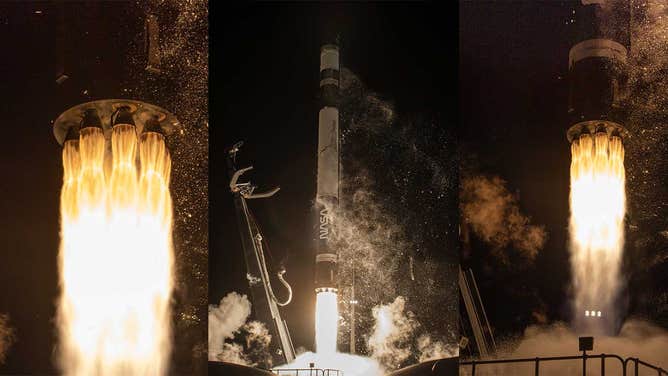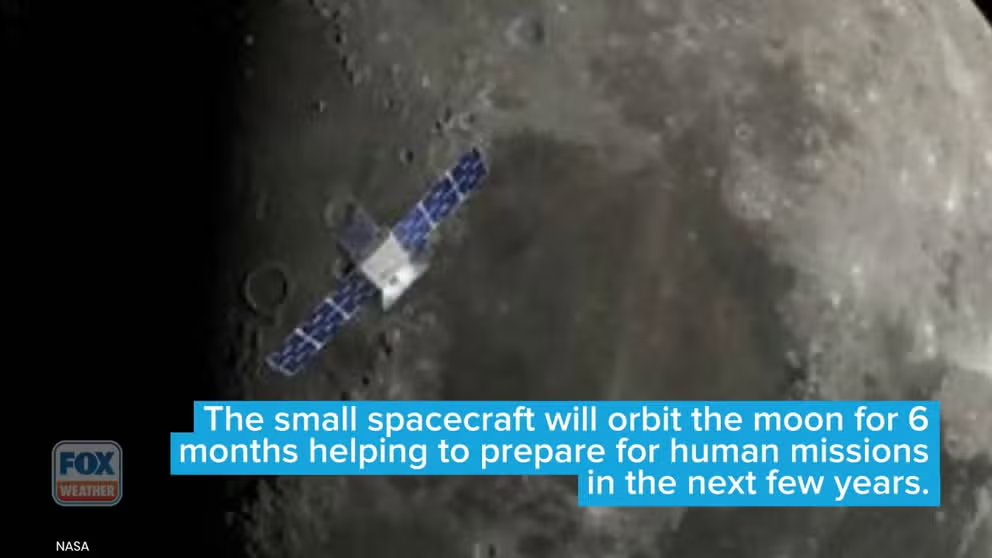NASA's moon spacecraft survives trials of spaceflight, inches closer to lunar arrival
NASA's microwave-size CAPSTONE spacecraft will test out navigating around the moon in a near-rectilinear halo orbit. The space agency plans to use the same specialized orbit for the lunar gateway, where astronauts will stop before heading down to the moon.
NASA's CAPSTONE mission will test out Gateway orbit
Launching in 2022, the microwave-size spacecraft will orbit the moon to test NASA's Lunar Gateway orbit before humans arrive in 2025.
To test the challenging orbit of a future moon space station, where astronauts will stop on the way down to the moon, a small NASA spacecraft is about to try it out first.
NASA's microwave-size CAPSTONE spacecraft, which stands for Cislunar Autonomous Positioning System Technology Operations and Navigation Experiment, was designed to test navigating around the moon in a special type of orbit.
CAPSTONE successfully completed a trajectory correction maneuver on Oct. 27, setting up the spacecraft’s arrival to lunar orbit on Nov. 13, according to NASA.
HOW TO WATCH FOX WEATHER ON TV
However, it hasn't been smooth flying for the satellite over the past 100 days. Advanced Space, which manages and operates the mission for NASA, has worked through issues as the spacecraft traveled toward the moon.
Most recently, a problem with a thruster valve on the spacecraft in early September caused CAPSTONE to lose control and spin. Advanced Space engineers determined a partially open valve resulted in thrust whenever the propulsion system was pressurized.
The CAPSTONE team uploaded a recovery sequence, and the spacecraft began functioning as designed in early October.
"This is a major accomplishment for the mission team and positions the mission well for upcoming critical activities and arrival at the Moon," Advanced Space officials said in a statement on Oct. 8. "The risks of this anomaly and recovery process were significant, and the team worked extensively and collaboratively to mitigate these risks through disciplined engineering analysis and review."
After launching on June 28 from New Zealand on Rocket Lab's Electron rocket, the spacecraft experienced its first hiccup about a week later. The satellite was not communicating via the Deep Space Network, a series of antennas NASA uses to downlink and uplink data with its spacecraft all over the universe.

Rocket Lab's Electron rocket lifts off from New Zealand with NASA's CAPSTONE lunar mission. (Image: Rocket Lab)
According to NASA, the brief blackout with the spacecraft started when the DSN team noticed inconsistent ranging data. In response, the spacecraft operations team attempted to access diagnostic data on the spacecraft's radio and "sent an improperly formatted command," making the radio inoperable. Engineers quickly worked to get the spacecraft phoning home again within 24 hours.
According to Advanced Space, the Deep Space Network recently performed a test with NASA's Lunar Reconnaissance Orbiter (LRO) spacecraft "to confirm that it could receive and return the signal CAPSTONE will be using to interact with the spacecraft as part of its CAPS software demonstrations once it arrives at the Moon."
CAPSTONE is a $19.98-million technology demonstration mission designed to test navigating around the moon in a near-rectilinear halo orbit.

Highly elliptical, a near rectilinear halo orbit around the Moon takes advantage of a precise balance point in the gravities of Earth and the Moon and creates a stability that is ideal for long-term missions like Gateway. (Image Credits: Advanced Space)
(Advance Space)
This orbit will take CAPSTONE within 1,000 miles of one lunar pole and then 43,000 miles from the opposite pole at its furthest point once a week. According to NASA, this halo-like orbit requires less propulsion for spacecraft flying to and from the moon versus circular orbits.
CAPSTONE will spend 6 months orbiting the moon with the possibility of extending its test mission.
